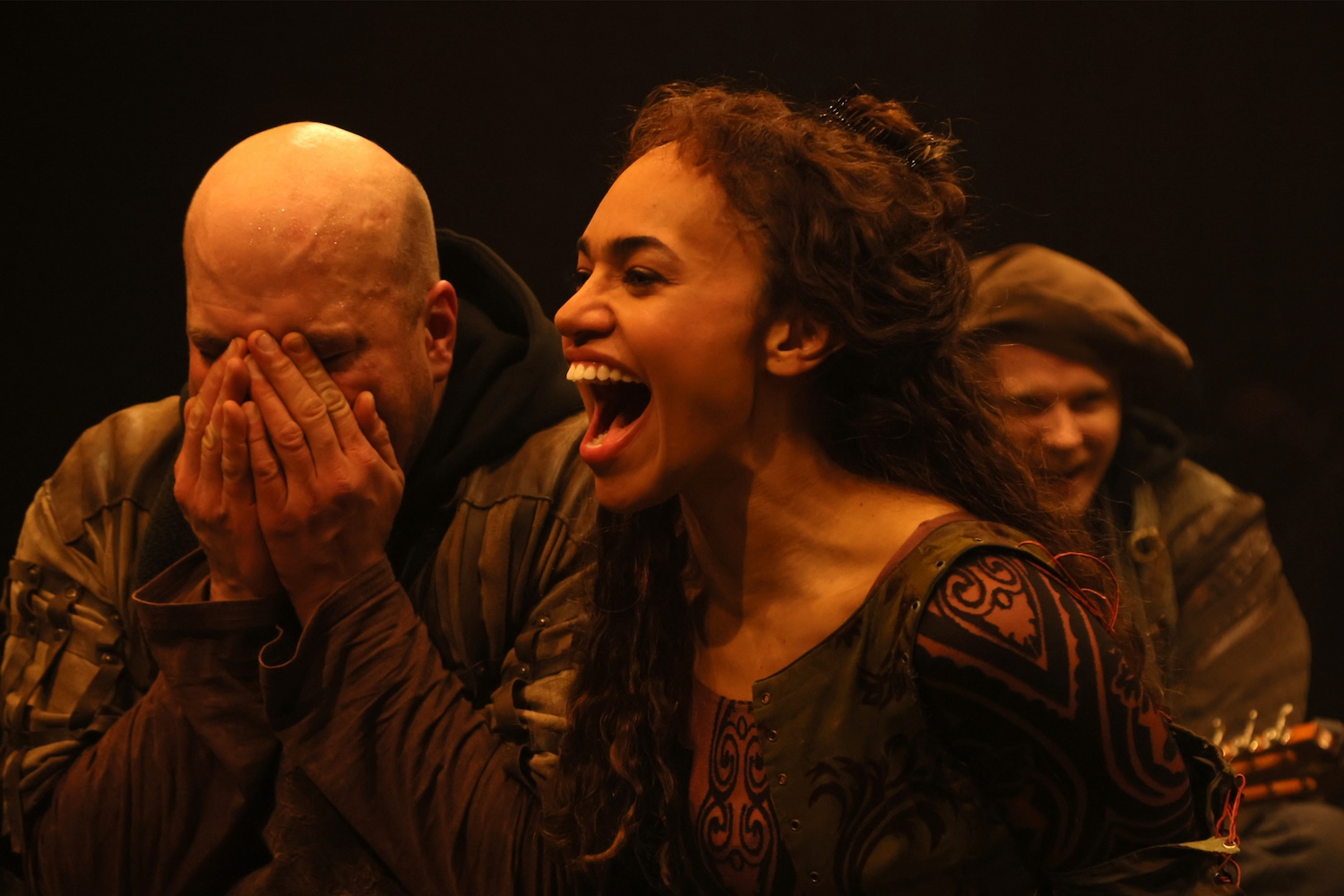***/***** (three stars out of five)
Of all William Shakespeare’s plays, the histories are generally considered the most inaccessible to contemporary audiences. They address both politics and court intrigues of a bygone time, utterly unfamiliar to most. Considering the dreariness of modern politics, it’s no surprise that these plays are often mistaken for being too turgid to hold anyone’s interest. A shame, really because among the ten or so history plays, there are a handful that are terrific studies not only of historical/political interest, but the nature of man and his everyday struggles. Most notable is Henry IV, Part I—the story of the ascendancy of Prince Hal who, at the outset, is generally considered by the royal court a hard-partying wastrel unworthy of his father’s throne. But when the nation needs him most the young prince leaves his wild ways and steps convincingly into adulthood, demonstrating competent leadership.

Unfortunately, the continuation of Henry IV Part I is Henry IV, Part II, which most audiences find less enthralling, as it lacks the first play’s very large emotional swings and is more informative than dramatic. As a result, rather than produce both plays (in repertory, for example) many theater companies choose to combine the two parts into a condensed (but longer) single play, Henry IV. And that’s exactly what has been done this season by Theatre For a New Audience who are presenting the play at the Polonsky Shakespeare Center in Brooklyn through March 2.
This adaptation of the two plays by Dakin Matthews (who also plays King Henry), has been seen in New York before. The 2003 production at Lincoln Center—featuring Kevin Kline as Falstaff and Ethan Hawke as Hotspur, the rebel leader who fights the ultimate, decisive battle with Prince Hal—was well received. But, as the 2016 Royal Shakespeare Company productions of all four plays of the “Henriad” (which culminates with Richard III) proved in their residency at the Brooklyn Academy of Music, the full play is simply a more engaging piece of theater. Nevertheless, under the skillful direction of Eric Tucker (Artistic Director – Bedlam theater group) who has proved time and again his facility with Shakespeare, this Henry IV is, barring one significant flaw, a mostly engaging and entertaining production featuring several terrific performances. The almost four hour run time feels shorter than many 90 minute plays I’ve seen this year.
Despite so many elements that work so well (including terrific period costumes by Tony winner Catherine Zuber and AC Gottlieb), Tucker and set designer Jimmy Stubbs have made the very curious choice to produce the play in the round on a minimalist set, rather than avail themselves of the Polonsky’s magnificent and multifaceted modern theater. I’ve witnessed so many wonderful stage arrangements in this theater since it opened in 2013, and this was the least inspired. More importantly, Shakespeare should never be performed in an environment which forces the actors to deliver their lines with their backs to the audience (which we know, by simple arithmetic, happens exactly 50% of the time in a “round” staging). This is manageable with more contemporary plays (like Ibsen’s An Enemy of the People, which was performed in the round last year on Broadway), but it’s a crippling blow to an audience (most of whom are well north of 60 years old and have hearing limitations) at a Shakespeare play. First of all, the words matter, and losing so much dialog takes one right out of the play. These are already complicated plays that require careful attention, and not being able to hear the words makes it impossible to keep up with the action.

It’s also a disappointment to not see the full potential of Henry IV, Part I due to the mash up (two thirds Henry IV Part I, one third Henry IV Part II) of the two plays. One of Shakespeare’s greatest characters, Sir John Falstaff, equal parts bon vivant and con man, is neutered in this production, despite a strong performance by the magnificent Jay O. Sanders. I don’t think I’ve seen a Falstaff get fewer laughs than in this production. We simply don’t get enough time with him to enjoy his whimsy and tomfoolery; and, for that matter, we don’t experience as much of the tragic arc that culminates in his being rejected by his protege, Prince Hal.
However, there is much to relish, especially in performances by the always brilliant John Keating (Earl of Westmoreland and Justice Shallow), the hilarious Steven Epp (Francis and Silence), and the absolutely excellent James Udom (Hotspur, Pistol), whose return to New York Shakespeare productions is long overdue and most welcome. While Elijah Jones’ Prince Hal was not particularly memorable, he executed the role professionally and precisely—a complicated and admirable feat.

Despite the components worth celebrating in this Henry IV, it seems to me that the many years’ absence of laudable Shakespeare productions in NYC continues, I’m sorry to say. There is some excitement about the Denzel Washington/Ryan Gosling version of Othello coming to Broadway next month, but it also risks merely being a star vehicle (not unlike Macbeth starring Daniel Craig in 2022) with little substance. And there’s hope for the reopening of Shakespeare in the Park at the remodeled Delacorte Theatre this summer, kicking off with Twelfth Night, featuring Lupita N’Yongo and her brother, Junior, which could be quite exciting. But, as Poins asks in Henry IV, “Is it not strange that desire should so many years outlive performance?” We wait and hope.
Henry IV. Through March 2 at Theatre for a New Audience’s Polonsky Shakespeare Center (262 Ashland Place between Fulton Street and Lafayette Avenue, Downtown Brooklyn). www.tfana.org












